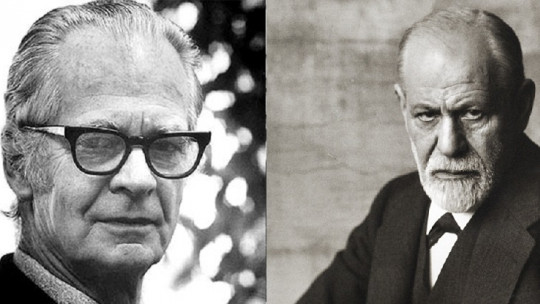
Throughout the history of psychology, numerous currents of thought and schools have been born, each of which interprets the human mind and mental and behavioral processes in a specific way.
One of these currents focused on what they considered the only directly observable correlate of the psyche, behavior, ignoring what they could not measure and trying to make psychology as scientific and objective a science as possible. It’s about behaviorism.
But there are different types of behaviorism. And despite being part of the same paradigm, various authors have established their own vision in this regard, considering different approaches, methods and objectives. This article presents some of the different theoretical developments that the behaviorist current has given.
The behavioral paradigm
Behaviorism is one of the main theoretical currents of psychology Born at a time in history when the psychodynamic current predominated, behaviorism opposed and differed greatly from its conception.
Behaviorism focuses on trying to offer the most scientific and objective explanation possible of psychic phenomena and human behavior, ignoring all information that cannot be directly observed. It proposes that the only clearly observable aspect of the psyche is behavior, this being the only element with which it is possible to work scientifically.
It does not deny aspects such as mental processes, but it considers them secondary, a black box impossible to study Behaviorism is an environmentally oriented paradigm, with behavior determined by environmental phenomena. Specifically, it is explained from the association between stimuli, which provoke a response in us. If we have a neutral stimulus that is associated with an appetitive or aversive stimulus, the response to the first will end up being the same as the second due to the fact that the link is generated between both stimuli. Responses are conditioned, this aspect being one of the most important for the behaviorist paradigm.
Types of behaviorism
Since the birth of behaviorism, there have been many advances and various authors who have worked from it, offering different perspectives and subtypes of behaviorism. Below we briefly present some of the most relevant
1. Watson’s classical behaviorism
Classical behaviorism is that formulated by John B. Watson, influenced among other aspects by the works of Pavlov and Thorndike. In this type of behaviorism, studies focus on the link between stimuli and responses, being especially important in the treatment of phobias.
It considers that the mind is neither observable nor analysable, but rather a black box that cannot be taken into account (and in some cases its existence or real importance was denied) and behavior is the only thing that can be analyzed objectively. What determines behavior is the environment and the stimuli: for classical behaviorism the subject is a passive and reactive being, who acts through learning associations.
2. Skinner’s radical behaviorism
Another type of behaviorism and one of the most important and recognized along with Watson’s is the radical behaviorism of BF Skinner. This author considered that behavior could not be understood solely through simple conditioning processes, despite the fact that the organism acts to adapt to good and bad. Skinner proposed that the explanation of behavior was more linked to the perception of the consequences of our actions
We learn that performing a certain action in a certain context has pleasant or unpleasant consequences, based on which we modify our behavior by repeating or inhibiting said actions. Skinner called this mode of behavior modification operant conditioning. He also highlights learning by trial and error.
3. Interbehaviorism or Kantor’s field behaviorism
Similar to radical behaviorism, it differs from it in that it considers behavior as an interaction instead of interpreting it as a simple response. Behavior allows the subject and the environment to relate and are interdependent, this interaction being what must be studied.
4. Tolman’s intentional or propositional behaviorism
Edward C. Tolman establishes another type of behaviorism, this time proposing that all behavior is composed of actions that end up directing the individual towards a goal.
The behavior is purposeful and not a learned sequence He also proposes that we establish cognitive maps in order to achieve these objectives, and use them as a learning mechanism. In this type of behaviorism, elements that take into account mental processes, such as intentionality, begin to be seen. In fact, some consider him the first cognitivist.
5. Hull’s deductive behaviorism
Clark L. Hull proposes a functional view of behavior: behavior and learning are understood as a way to survive the environment This is explained by the formation of habits from which to satisfy or reduce impulses. The subject begins to have an increasingly active role.
6. Rachlin’s teleological behaviorism
This branch of behaviorism establishes behavior as something purposeful, directed toward a goal, and carried out over time. Howard Rachlin believes that the mind is the way the body works, not something internal, and ideas a behavior developed over time. He highlights the idea of the time frame of an event: its past, present and future. He also considers that the behavior occurs before the reinforced, observing that the effect occurs before the cause (the behavior is the effect of the desire to eat).
7. Staddon’s theoretical behaviorism
Theoretical behaviorism is a type of behaviorism in which behavior is conceived as an action derived from environmental variables and also biological ones. It does not consider cognitive processes as behavior, but as a theoretical mechanism that only has the function of managing states that link behavior and environment. It is a more cognitivist and biological approach than most variants of behaviorism.
8. Staats psychological behaviorism
This type of behaviorism stands out for presenting the concept of basic behavioral repertoires, which are developed throughout learning and development in a cumulative manner. Also representative is the fact that it gives importance to emotional factors in behavior and learning.
9. Timberlake’s biological behaviorism
This type of behaviorism stands out for its search for explanations for behavior and learning based on an ecological vision of them. For William Timberlake, behavior is linked to the context in which the subject develops and it has a biological origin that predisposes us to feel and act in a certain way.
10. Hayes’s functional contextualism
This author focuses his perspective on verbal behavior: that is, on language This serves as an intermediate element between behavior and environment. Steven Hayes also proposes the need to investigate mental phenomena if we want to understand behavior. He also works on aspects such as the influence of rules on behavior.
Other types of behaviorism and effect on other currents
The aforementioned are some of the main types of behaviorism that have been developed over time. But there are many others, such as Bijou’s empirical behaviorism, or philosophical, emergent or systemic behaviorisms.
In addition to this, we must take into account that the evolution of behaviorism and the overcoming of its limitations have allowed the emergence of many other theoretical models such as cognitivism and constructivism.








